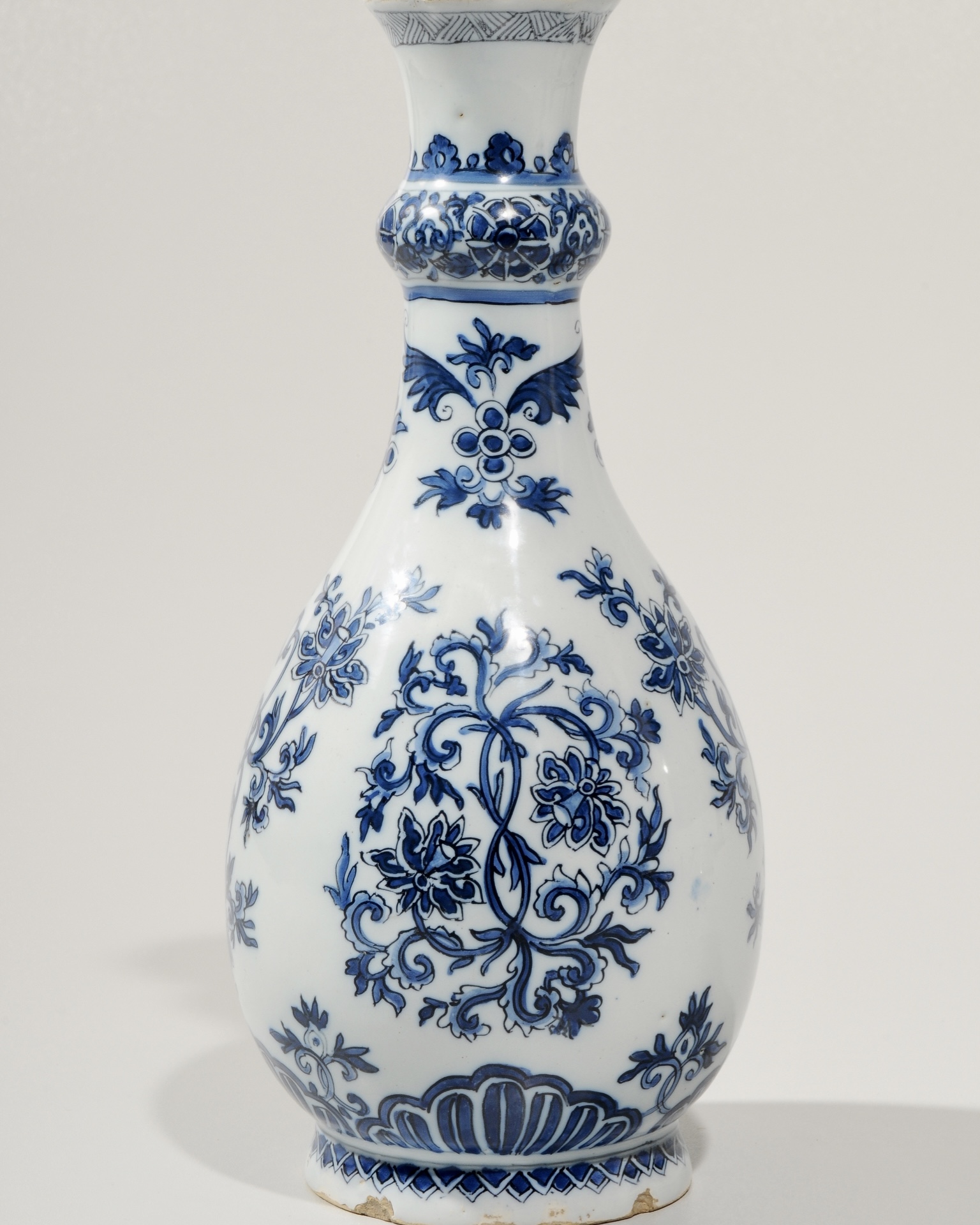D8817. Blue and White Guglet
€8.500,00
Delft, circa 1695
Marked AK 10 in blue for Adrianus Kocx, the owner of De Grieksche A (The Greek A) factory from 1686 to 1701
The teardrop-shaped body painted on the front and reverse with an oval medallion of stylized hibiscus blossoms and scrolling foliage beneath a quatrefoil blossom and leaf device, and on either side with a triangular medallion of hibiscus blossoms, scrolling foliage and strapwork beneath a similar quatrefoil blos- som, the lower body with fan motifs above a leaf-tip border around the foot, the knop on the neck with alternating ‘Tudor Roses’ and ruyi heads beneath a band of blossoms and dots, and the flaring rim with a herringbone border.
Dimensions
Height: 27 cm. (10.6 in.)
Provenance
The collection of G. Ephis, France
Out of stock
Description
Note
This vase bears the decoration of the Tudor rose on its neck. There is only a small group of Delftware objects decorated with this striking flower ornament. The Tudor rose, which is sometimes also called the Union rose, is the traditional floral heraldic emblem of England. Its name and origins come from the House of Tudor, which united the House of Lancaster and the House of York. The Tudor rose consists of five white inner petals, representing the House of York, and five red outer petals to represent the House of Lancaster.
The striking flower ornament on the group of Delftware objects also appears to have been taken from Chinese porcelain from the Kangxi period (1662 – 1722). Although the number of eight petals does not correspond to the number of petals of the original Tudor rose, it is quite possible that it was chosen especially for Mary’s Delftware. Many Delftware objects that bear this emblem are marked for De Grieksche A (The Greek A) factory. Since De Grieksche A factory is considered one of the most famous and prestigious Delftware factories, it was only logical that this factory would function as the purveyor of the court.




